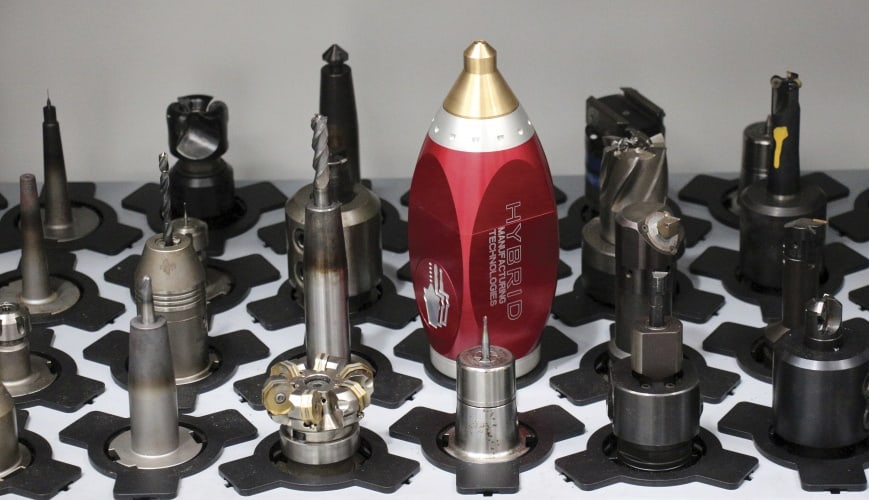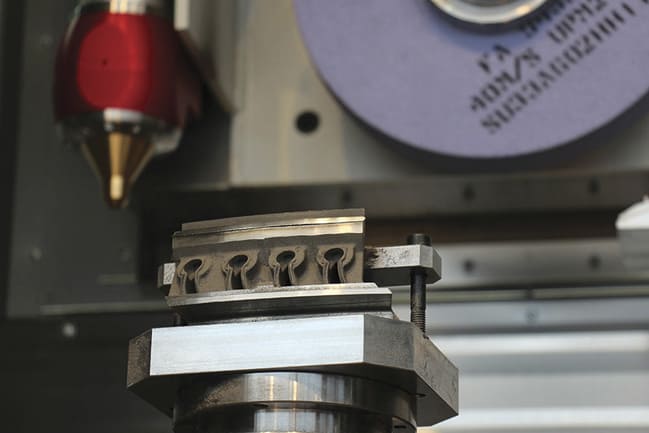The 3D printing industry is ‘choking off its own revolution’. Those were the words of designer Francis Bitoniti earlier this summer, as he described how the technology had become associated with toy-like machines and overpriced materials.
The problem is that the promise of 3D printing often can often be vastly different from the reality. The technology has been hailed as the solution to everything from self-assembling furniture to custom-made prosthetics. In reality, however, 3D printing has largely been confined to creating prototypes rather than the final product.
But while consumer products have proven difficult for technology, there is one area that is beginning to benefit hugely from 3D printing: remanufacturing. The process involves the disassembly of products, during which parts are cleaned, repaired or replaced then reassembled. It can often be costly, time consuming and labour intensive. But 3D printing could change that.
“Remanufacturing is more efficient than recycling because only a small portion of the part needs to be remade instead of the entire thing,” Dr Jason Jones, co-founder and chief executive of Hybrid Manufacturing Technologies, told The Engineer.
Remanufacturing recaptures the value given to the product when it was first manufactured. While it is an ideal solution in terms of cost and energy, for older machines it can prove difficult to get the needed parts to replace those that are worn or broken. That is where 3D printing can help.

Jones claims that a specific type of 3D printing based on automated welding, known as directed energy deposition (DED), is the ideal technology for adding back missing, broken or worn portions of metal parts. A directed energy deposition machine is usually made up of a nozzle placed on a multi-axis arm, which deposits melted material onto the surface, where it hardens. In some ways, it is similar to material extrusion, but the nozzle can move, allowing the material to be deposited from any angle.
”Remanufacturing is more efficient than recycling because only a small portion of the part needs to be remade instead of the entire thing
Jason Jones, CEO, Hybrid Manufacturing Technologies
The DED process is usually used with metals in the form of powder or wire, but it can be used with polymers and ceramics. For remanufacturing, it could help create intricate parts in a fraction of the time, or be used to make custom parts that are no longer in production elsewhere. “The remanufacturing of mechanical parts that wear out as they rotate are ideal candidates for 3D-printed repair,” said Jones. “Often they are manually repaired by welding and grinding. However, 3D printing offers a new level of automation for these activities.”
Examples of these parts include the bearing surfaces on shafts, impellers for turbochargers, and blades, vanes and blisks for various types of turbines. Normally these rotating parts are associated with power generation and transport, particularly aerospace.
But directed energy deposition (DED) is not a perfect solution. “The DED approach is not ideal for highly detailed internal complexity that is commonplace in some of the other types of 3D printing, such as powder bed fusion,” warns Jones. “There is also a limit to how hot you can get a part before it begins to deform. For that reason, DED is most successful right now where only a small portion of the part is hot at any given time; nevertheless there is a desire to increase the rate of deposition.”
These technical limits are being addressed by a growing number of projects. For instance, the creation of software that anticipates the hotspots and high stress points and compensates for them is an area of research at Lawrence Livermore National Labs in the US as well as start-up 3DSIM. Lawrence Livermore National Labs is currently using its computer modelling expertise to predict component performance of 3D-printed parts over time, particularly those created using novel techniques.
Meanwhile, Darpa’s Open Manufacturing project is attempting to assess how 3D-printing technologies change the performance of the final product. Its project will address the technical challenge of 3D printing for remanufacturing, among other things, by building computer models and 3D-printing technologies that they say will be able to capture, analyse and control variability in the manufacturing process to predict the properties of the final part.
”3D printing is an alternative to a blunt and repetitive ‘test and retest’ approach that is inevitably expensive and time consuming, ultimately undermining incentives for innovation
Mick Maher, Defense Sciences Office, Darpa
“Open Manufacturing is fundamentally about capturing and understanding the physics and process parameters of additive and other novel production concepts, so we can rapidly predict with high confidence how the finished part will perform,” said Mick Maher, programme manager in Darpa’s Defense Sciences Office. According to Maher, the approach is an alternative to “a blunt and repetitive ‘test and retest’ approach that is inevitably expensive and time consuming, ultimately undermining incentives for innovation”.

The biggest challenge with 3D-printed parts made for remanufacturing is that they are usually made up of tiny, micron-scale weld beads that are placed on top of each other. As these beads create a different microstructure, the 3D-printed part can have radically different properties than one created with the same material using traditional manufacturing techniques. Darpa believes that knowing how different materials behave when they are 3D printed could help counteract this effect.
To achieve this enhanced manufacturing control, Open Manufacturing is looking at ‘rapid low-cost additive manufacturing’ (RLCAM), which will use computer modelling to predict materials performance for direct metal laser sintering (DMLS) on a nickel-based superalloy powder. In DMLS, a laser melts the metal powder to additively build a 3D product. A separate project will combine physics- and data-based informatics models to study what might affect the quality of large manufactured structures, such as aircraft wings.
“There are a variety of sensing and other adaptive software options to help make repairing easier, since when it comes to used parts no two are exactly the same,” said Jones. As well as software, Jones’s company, Hybrid Manufacturing Technologies, earlier this year revealed millGrind, the world’s first hybrid grinding machine. The technology could help make parts for remanufacturing stronger and more complex.
“For the space station even, [3D printing] will decrease risk, decrease cost and increase efficiency. But for longer- term missions, for space exploration, this is absolutely a critical technology
Niki Werkheiser, 3D print project manager, Nasa’s Marshall Space Flight Center
The millGrind is a continuous-dress creep-feed grinding machine that comes with laser cladding and milling capabilities. This system lets users perform grinding with additive manufacturing in a single setup. It aims to offer flexibility so manufacturers can reduce the number of setups needed to get to finished parts, particularly in aerospace and marine applications. This will aid organisations such as the navy, which is considering using rapid prototyping for applications to repair parts aboard ships.
It isn’t just Earth-bound applications that will benefit from better-performing 3D-printing technologies for remanufacturing. Last year, an astronaut on the International Space Station used a 3D printer to make a socket wrench in space. Eventually, space agencies are hoping that digital code will replace the need to send tools and spare parts into orbit.
“For the space station even, [3D printing] will decrease risk, decrease cost and increase efficiency,” Niki Werkheiser, 3D print project manager at Nasa’s Marshall Space Flight Center, said late last year. “But for longer- term missions, for space exploration, this is absolutely a critical technology.”
Jones is hopeful the limits of technologies such as DED will soon be overcome using smart software tools and hybrid machines. Whether in space or on the factory floor, 3D printing, he said, may have just found the niche its needs to finally deliver on its promises.




Project to investigate hybrid approach to titanium manufacturing
What is this a hybrid of? Superplastic forming tends to be performed slowly as otherwise the behaviour is the hot creep that typifies hot...